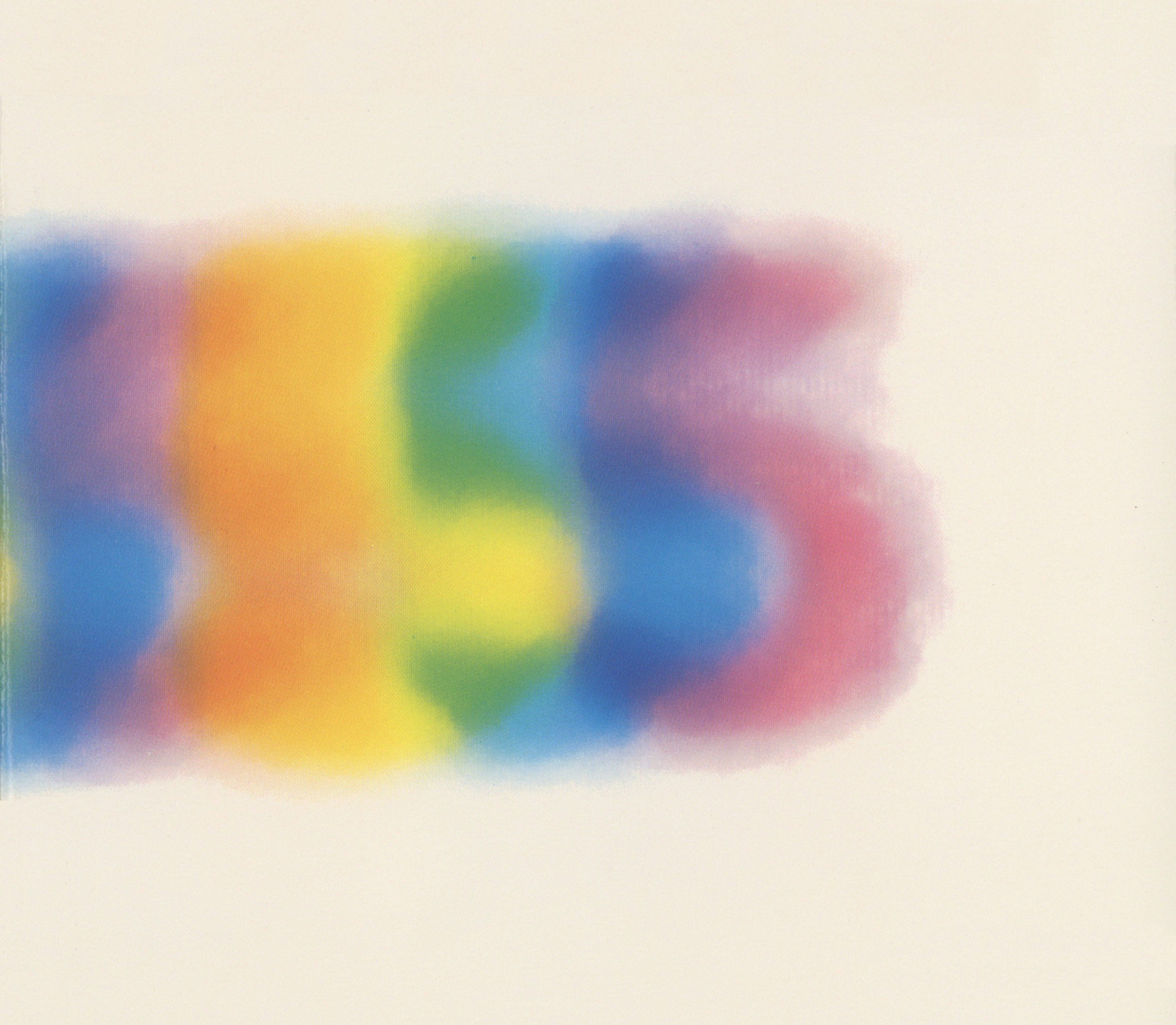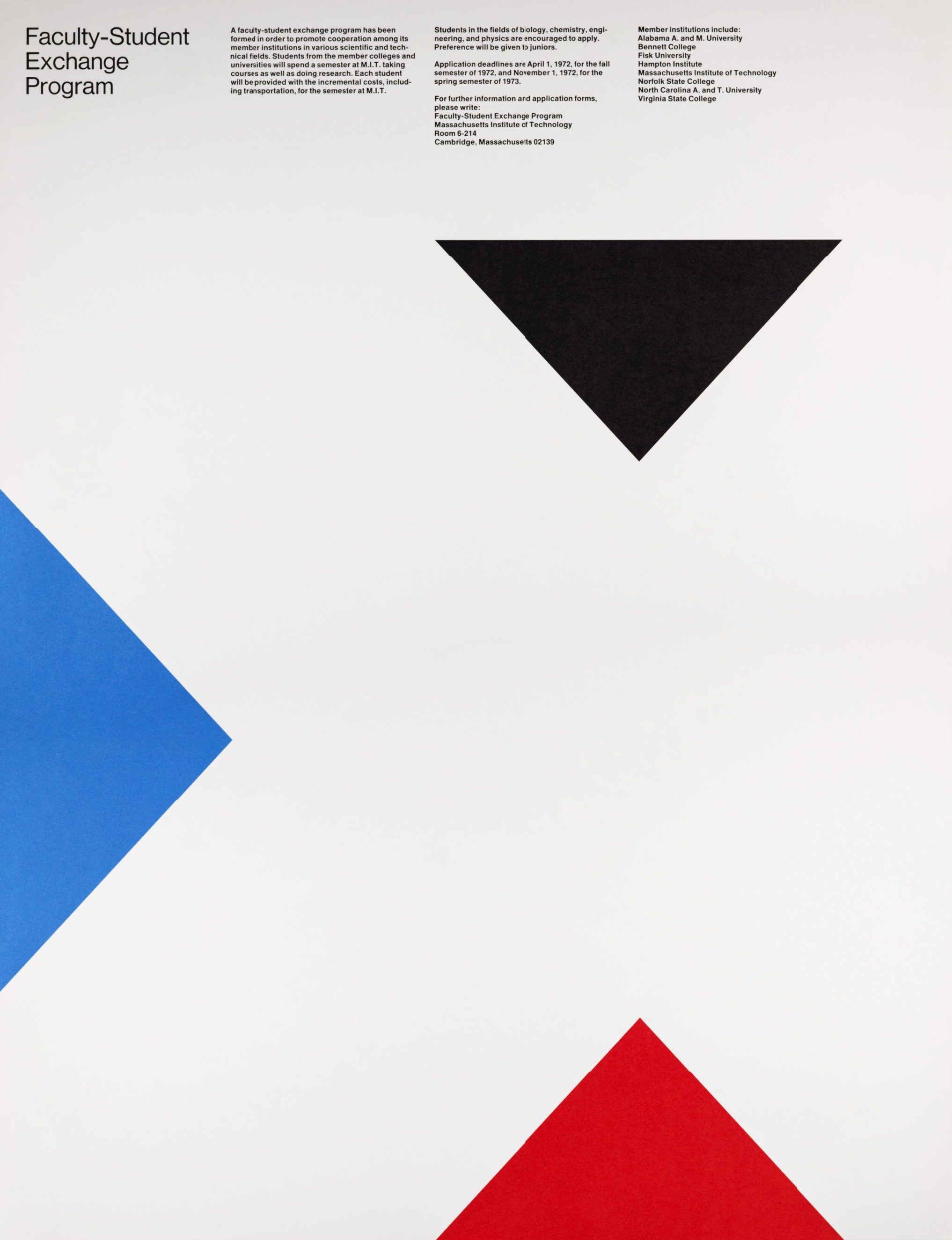
Jacqueline Casey, David Small, MIT Media Laboratory Fifth Anniversary. 1990
Thirty Years What I learned from Jackie Casey: Nicholas P. Negroponte
I met Jackie when I was eighteen. I was a sophomore at MIT. She was not a passing acquaintance. We had lunch together almost every day, for the next four years. During that time I loitered in the offices of Design Services where I learned all I know about graphic design.
Hofmann and Ruder were a fruitful pair to whom I'm much obliged. They were leading in the avant-garde and became the main exponents of the Basel School. Hofmann was – and is – a great graphic designer and a teacher recognised worldwide. When he showed me how to design a letterform I learned much more than this. Ruder was a dedicated typographer, with a profound sense of general culture, and always placed his specialist knowledge in its historic context.
I learned how a design could be at once Swiss in its cleanness, Italian in its imagination, and playful like Jackie herself. She taught me that a grid is not a prison, but can be one of the most flexible underlying structures and most subtle organizing forces. I understood that if you did not use Helvetica medium you had better have a good reason. I learned about letter spacing long before the computer community knew the concept of kerning.
I knew almost every poster in this book, in its respective time, as a living element in the MIT environment — in the halls, on office walls and as memorabilia cherished by the students (who often stole them as quickly as they went up!). The pace of MIT life is almost frenetic, the buildings can be dour. Jackie’s posters made me stop and smile; in some cases I felt they were winking at me!
When the Media Lab opened its doors in 1985, Jackie created our corporate identity. No member of the Media Lab can give his or her calling card to someone without receiving a comment about it. I have had letters answered only because, according to the authors, the letterhead caught their attention.
In 1989, Jackie joined the Media Lab as a Visiting Design Scholar. One result of her work at the lab is illustrated on the next page. Working with David Small, then a student, now a staff member, Jackie engaged the full force of our massively parallel supercomputer, then the world’s first such machine to be delivered, to develop a design using David’s powerful tools that simulate the absorptive properties of paper and the behavior of pigments modeled at the microscopic level. Their collaboration resulted in a powerful image in which the pigments are gradually diffused by the amount of moisture in the paper over time. It embodies a computational problem no less complex than weather prediction or the visualization of atomic elements. It is a landmark of computer graphics and design.
Jackie always says she cannot teach. Ha!! She doesn’t need to. She has already taught thousands of young designers through her work, which is why this book is so important, in that yet more will benefit. Those of us who have had the privilege of working with Jackie did nothing but learn from her insights. She captures the essence of a design program in less time than it takes most of us to understand its constituent parts. What is most extraordinary is that she does all of this with profound humor, which, in my mind, is what separates great from good design.
Now, exactly thirty years later, my son is in design school and, frankly, I don’t wonder why.
Excerpt from Posters, Jacqueline S. Casey: Thirty Years of Design at MIT. The MIT Museum, Cambridge, Massachusetts, 1992

Jacqueline Casey: Faculty-Student Exchange. Poster, 1972.
Jacqueline Casey: Aaris Sherin
(b Quincy, MA, 20 April 1927; d Brookline, MA, 18 May 1992), graphic designer. Casey received a BFA and certificate in fashion design and illustration from the Massachusetts College of Art, Boston. Her first jobs included work in fashion illustration, advertising and interior decoration.
In 1955 she was hired by fellow Massachusetts College of Art alumnus Muriel Cooper to design summer promotions material for MIT Summer Sessions. Subsequently Cooper offered her a position as a full-time designer at MIT’s Office of Design Services.
She learned the principles of graphic design from Cooper and the Swiss designer Theresia Moll, who worked in the Office of Publications during 1958. Moll was particularly influential for Casey and introduced her to elements of Swiss design. When Cooper left to join the MIT faculty in 1972, Casey became director of the Office of Publications (1972–89).
Casey is best known for the posters she created to publicize MIT events and exhibitions during the 1960s and 1970s. Her high-contrast, type-heavy compositions were intended to stand out on the already cluttered university bulletin boards. She often used manipulated letterforms for primary text and set the supporting information in smaller type.
Her compositions used color, proportion and proximity to create a visually and verbally effective typographic design. She repeatedly stated that her goal was to stop her audience, catch their interest and then educate them on her client’s upcoming event or the poster’s subject.
For the 1972 poster advertising the MIT faculty-student exchange program, Casey used negative space created by red, blue and black triangles to form an area of white in the shape of an “X.” The abstracted letter references the word “exchange,” and the simply ordered title and supporting text compliment the stronger negative shapes that are the focal point of the composition, creating a blend of visual and verbal logic that is typical of Casey’s style.
In 1971, 17 posters by Casey and the staff at the Office of Publications were featured in Print Magazine’s competition Poster USA: 1960–1970. It was the second largest number by an individual or studio.
In 1989 she retired as director of Design Services but stayed on at MIT as a visiting design scholar at the Media Laboratory. Casey’s posters have been widely exhibited, and her work is in the permanent collections of the Library of Congress, Washington, DC, the Museum of Modern Art, New York and the Cooper-Hewitt Museum, New York. She served as guest lecturer at Massachusetts College of Art, Yale University, Carnegie-Mellon University and Simmons College.
Bibliography
“Campus Publicity in America: Massachusetts Institute of Technology,” Graphis, xx (July 1971), pp. 402–9
F. H. K. Henrion: Typo Graphic Design: Examples of Visual Communication by Leading Graphic Designers (Zurich, 1983)
R. Siegel: American Graphic Designers: Thirty Years of Design Imagery (New York, 1984)
L. McQuiston: Women in Design: A Contemporary View (New York, 1988)
A. Livingston and I. Livingston: Thames and Hudson Encyclopedia of Graphic Design and Designers (New York, 1992)
“Ellen Lupton and Jacqueline S. Casey, 1927–1992,” AIGA J. Graph. Des., x/3 (1992), pp. 14
Posters: Jacqueline S. Casey: Thirty Years of Design at MIT (Cambridge, MA, 1992)
A. Livingston and I. Livingston: “Jacqueline Casey,” The Thames and Hudson Dictionary of Graphic Design and Designers (London, 2003/2006), p. 45
B. E. Resnick: “Women at the Edge of Technology,” Eye, 17/68 (Summer 2008), pp. 26–8
Excerpt from The Grove Encyclopedia of American Art. Oxford University Press, 2011
